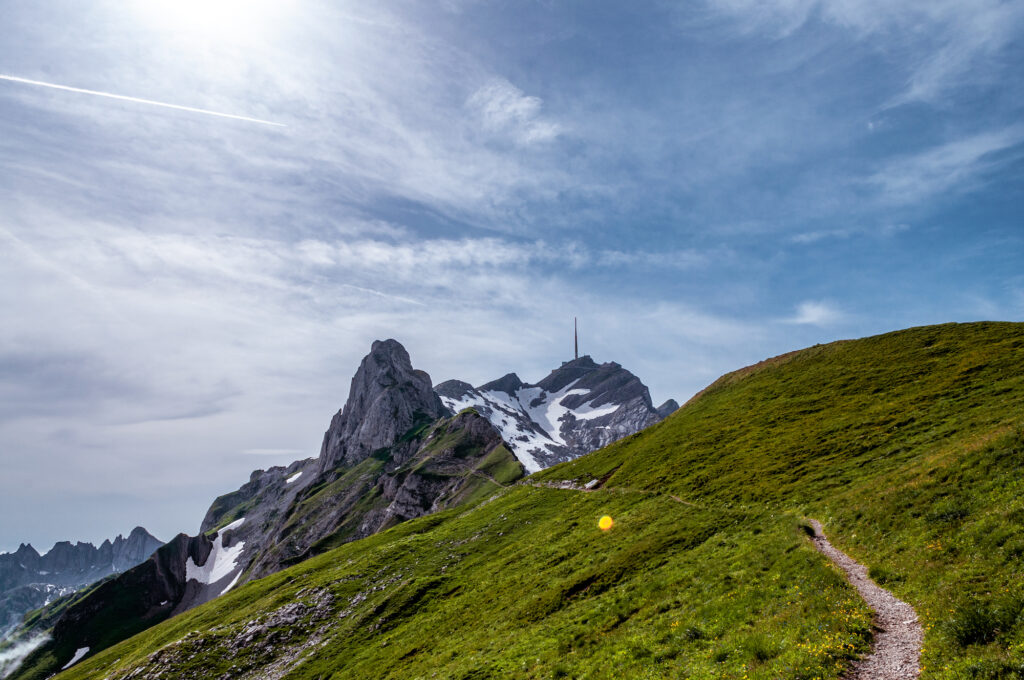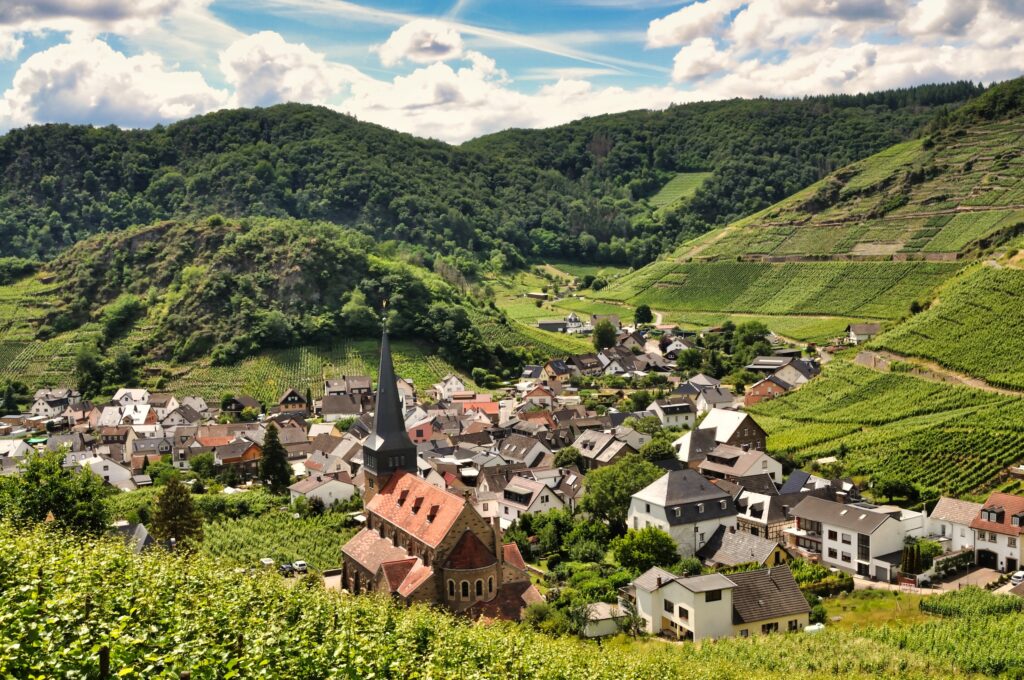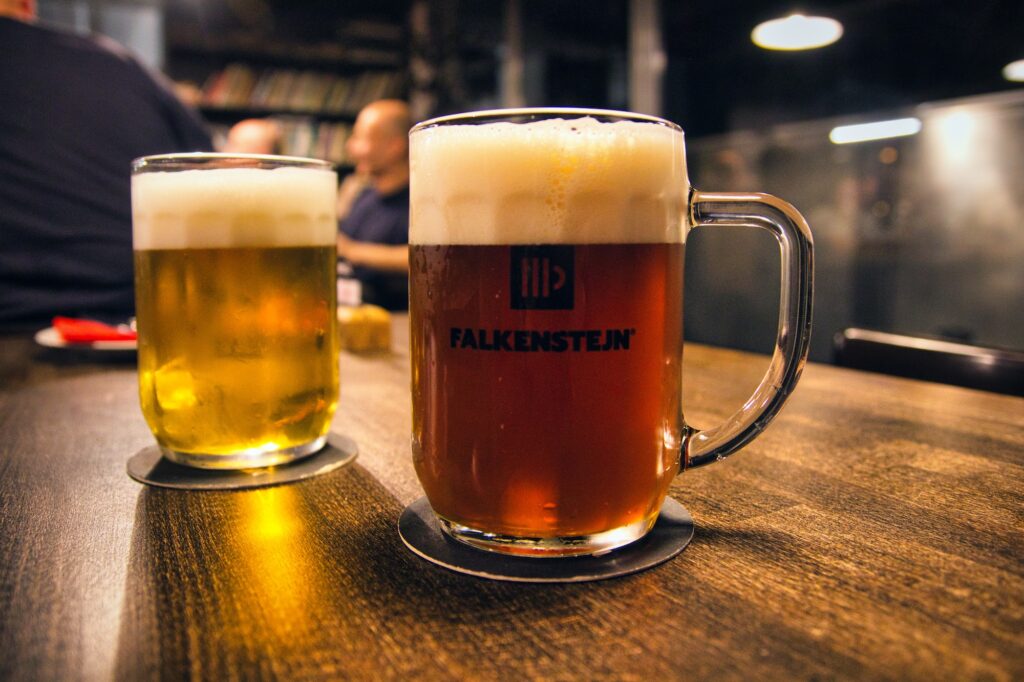Hiking along the Elbe in Germany’s most northernly wine-growing region takes you to many luxurious vineyards and Weinguts, home to some of the country’s best white wines.
Trail:
Radebeul – Radebeul
Distance:
10km

Northern Wines
It’s one of Germany’s most northerly, wine regions. Hugging the Elbe just outside of Dresden, the vineyards in the Saxon wine region date back to the 14th century, and produce some of the country’s best white wines.
Famed for its Müller-Thurgau and Rieslings, the area if filled with castles, forests and even a narrow-gauge stream railway.
In the region alone there are around 3,000 small wine-growers, harvesting Pinot Blanc, Pinot Gris, and Traminer grapes to make the award-wining, fruity and dry wines the area is famed for.

It also happens to be one Germany’s smallest wine growing regions as well, which means that it’s reasonably easy to walk around and see and experience as much as possible. In fact, for the more intrepid wanderers, there is a 90km hike that takes you from Pirna through to Meissen – Diesbar-Seußlitz that will take you through the entire wine growing area.
For those more interested in day hikes, starting off in Radebeul is going to be one of your better options. Just 20 minutes outside of Dresden, accessible by train, there are multiple hikes take through the vineyards and to several illustrious Straußwirtschaften (wine taverns).
You will see three wine tours signposted here; there is one with a red grapes, one with green, and one with just a red dot. The three generally follow a lot of the same routes, so you can swap and interchange, as you wish.

Radebeuler Weinberge
This particular route I’m referring you to is a hybrid one that follows the red dot, but also takes in some extra details. You can see a map of the route HERE.
It has to be said, this was one of my favourite all-time hiking and drinking experiences so far.
The accessibility of excellent Weinguts, next to sublime hiking routes that venture through forests, villages, and hillsides, make this a journey not to be missed.
When departing Radebeul-Weintraube station, follow the signs for the wine trek, alongside the narrow-gauge railtracks, down Mühlweg until you arrive at the entrance to Hoflößnitz, a winery that is as old as the region itself. Here, you can sit at a beautiful terrace and look out across the vineyards, sample from the wine bar, and enjoy the many food stalls that are on offer. (Personally, I would save this visit to the very end of your circular tour, mainly because the experience is so profound.)
On our trip here we were lucky enough to visit the Weinbergfest, with live music and entertainment celebrating the end of the harvest, which gave the winery a total vibe.
You have the option here to also hike up to the top of the Berg along the Spitzhaustreppe. Here there are a lot more excellent wineries to visit, places you could really spend a lot of time at, including the majestic Spitzhaus.
Sitting right next to Hoflößnitz, hidden in fields of sunflowers, is the Karl Friedrich Aust Weingut. The wines here are stunning and the Reisling is as crisp and clear as it should be, with the right amount of mineral texture. Make sure this is on your list of places to go.

From here, find your way back on the red dotted hiking path. This can be done by taking a short wander through the woods, or double backing on yourself for about 500 metres.
The route then takes you uphill, along some scenic vineyards, up to the Winzerei Paradiesberg. The beautiful, yet rustic cabin sits in the centre of the vineyards, and from the garden terrace you can look out across the Elbe into the city of Dresden. It’s the most delightful of little cabins, and the prices for their own select wines here are extremely reasonable. We mainly drank the federweißer here as it was the right season. Also, do not overlook the kitchen here, where you can sample varieties of flammkuchen, mixed meat plates, and cakes.
Follow the path outside you follow the red dots through the forest, pass the water tower, down and back up on Mohrenstrasse, until you arrive at your next stop, Weinwirtschaftam Neufriedstein, a local winery that stocks different wines from local producers. This place offers yet another excellent look out across the Elbe, with a beautiful outdoor terrace and another rustic little wine shed. Here we tried the Müller-Thurgau from Kastler Friedland which was incredible. Take note however, this stop is only open between June and July, mid-August till end of October.

Wackerbarth
Moving on forward and your arrive at the planetarium, that also doubles out as yet another look out point. Here you get to wander directly through the wine fields and down the hill to the back of the illustrious and magisterial Schloss Wackerbarth, a 300 year-old palace that is home to the Wackerbarth wines and sekts. The pristine setting is perfect to sit back and enjoy yourself. There’s also an outdoor restaurant, along with options to do wine tasting and tours. Wackerbarth is primarily known for its fizzy wines, with their crisp, mineral flavour.
The final leg of the tour is a direct walk back to the beginning in Radebeul along Meissner Strasse. Keep an out on the right for the Friedenskirche if you get a chance. Back at Radebeul, finish your walk with a stop off at Hoflößnitz if you haven’t done so already, or one of the many incredible wineries that sit perched on the hill.




